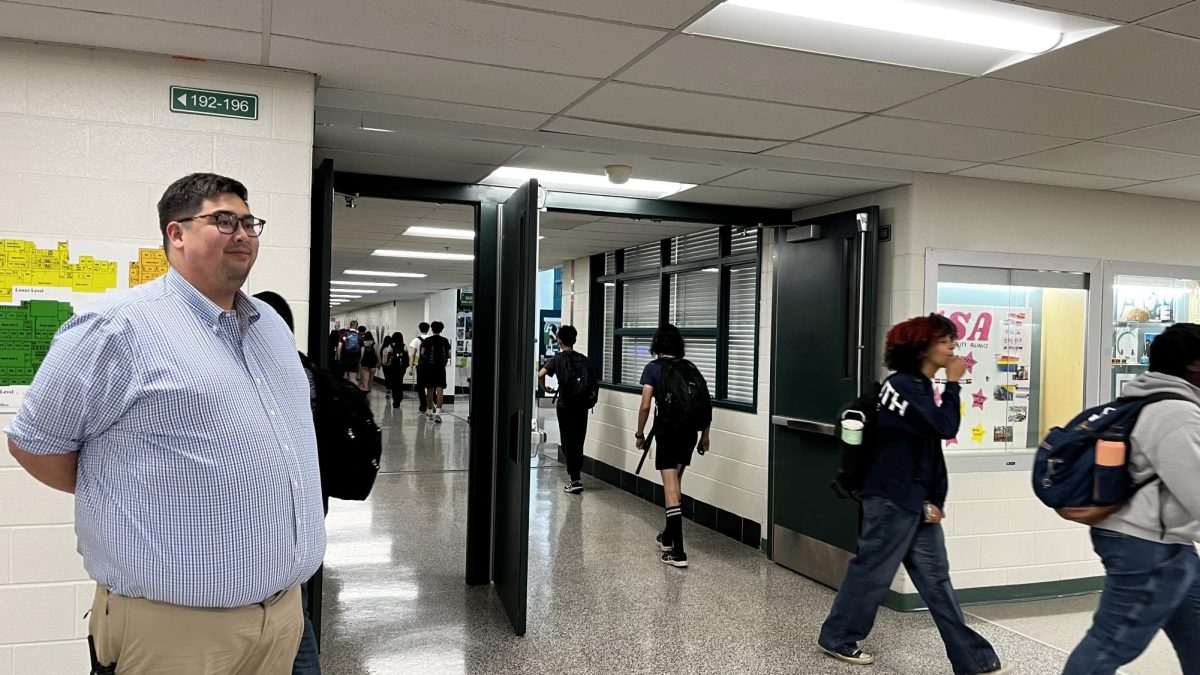Since the end of last year, vape detectors have been implemented in all high school bathrooms across the county. Yet even after preventative measures such as the vape detectors and closed bathrooms, the epidemic continues.
Vape detectors sense more than just smoke from a vape; they also identify regular smoke and “aggression” (yelling or screaming in the bathrooms).
Once the detectors go off, the light turns green and a notification is sent to all the security guards in the building. After that, it’s up to the security guards to decide how to react. They can go to the cameras around the bathroom and take a snapshot of the moment people come out.
Security will also make their way to the bathroom the detectors go off to see if they can get anyone in the act, after which they’ll send the snapshot to the Security Team Leader Anthony Williams, or to an administrator.
“It’s pretty effective as far as what goes on,” security guard Kelly McDonnell said. “The biggest problem with them is people, it’s more of a people problem than an issue of the product.”
Security has difficulty responding when they do not have a presence near the bathroom or when a security guard is absent since substitutes aren’t available.
If someone consistently appears on the snapshots, then they will be taken in to be searched. The school performs a self-search, with security and their admin present, which involves a student searching themselves and emptying their pockets.
Security will search students’ bags. If they find something, it is up to the administrators to determine suspension length. Although some students possess both nicotine and THC devices and it is illegal for someone underage to have them, there will be a harsher outcome to those who have a THC vape.
“You see patterns,” McDonnell said. “Patterns is what gets you searched.”
The girls’ bathroom, especially during passing periods, is rarely used for bathroom purposes. Since there are only two female security guards, it is harder for them to cover the grounds. When girls do use the bathroom, there is a line for the stalls, a labyrinth to the sinks to wash your hands with smoke surrounding students.
“People don’t like to get caught, but also they’re not doing a lot to try to avoid the vape detectors,” sophomore Mackenzie Cho said.
Some female students believe that the vape detectors aren’t working because of how foggy and smelly the bathrooms are.
“I’ve never seen any of them [the detectors] go green, if they do then it’s because there’s a large group of people in the bathroom,” senior Aliyah Fischer said.
In contrast, reports show that the boys’ bathroom is not as full as the girls’. There are groups of students who notice the vape detectors and others who don’t. Even with the fewer crowds, vaping is still present in the boys’ bathroom, even with security around.
“I don’t know if it’s a lot of people [vaping], but it’s very frequent,” junior Saliou Hann said. “I don’t know if the vape detectors are really working. I don’t think it’s effective, and I think people will continue vaping cause it’s an addiction.”
According to the Centers for Disease Control and Prevention, nicotine can harm brain development, containing cancer-causing chemicals and creating feelings of anxiousness. When one is steering away from their addiction, there will be negative effects such as trouble sleeping or a hard time concentrating, but after the brain gets used to not having nicotine the symptoms will fade.
In the school’s wellness center, help available for students who want to stop vaping. Students can speak to Resource Counselor Imani Ladson as a first step to get help in the school. There is also a text line to stop vaping: Text VAPEFREE to 873-373.









